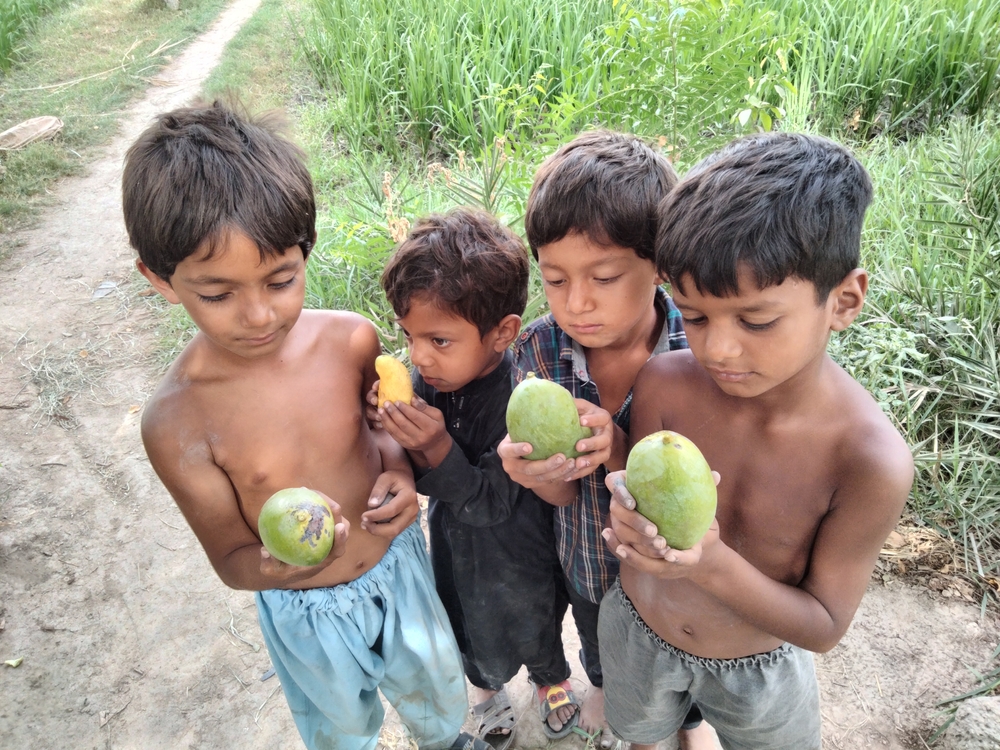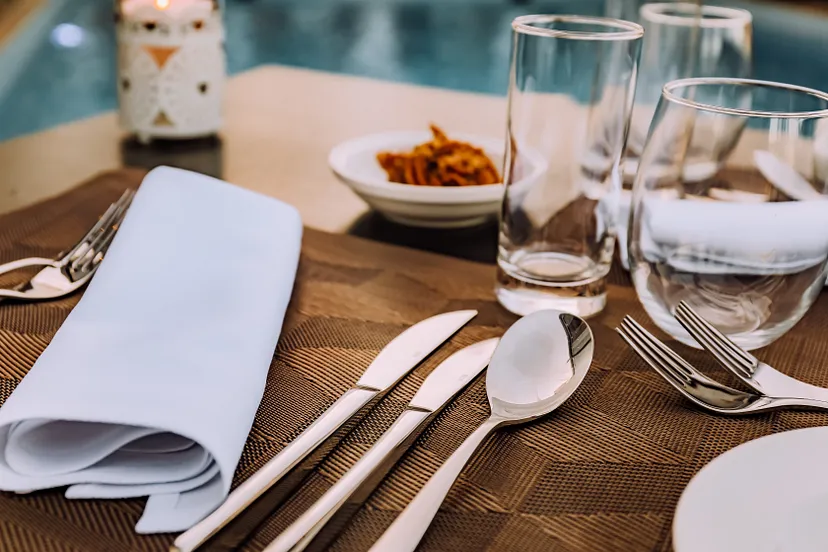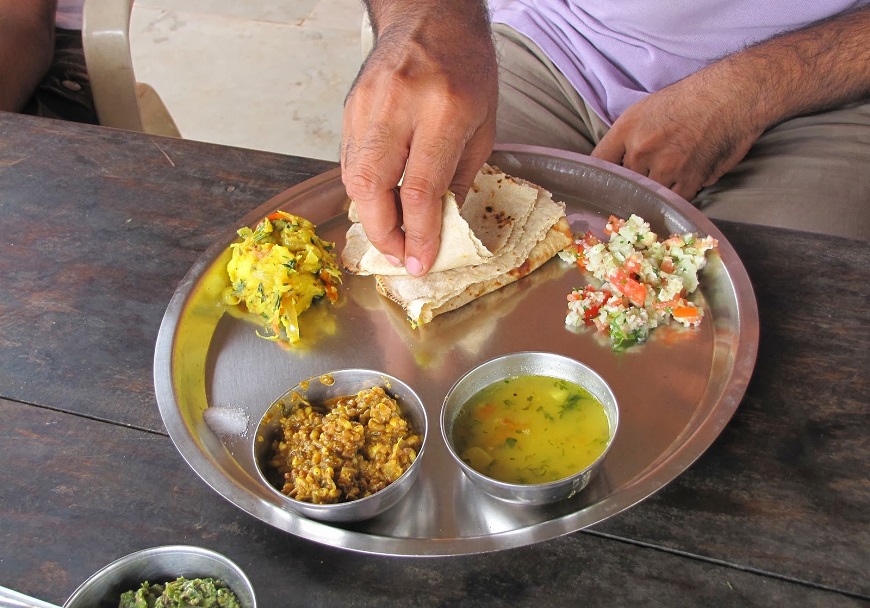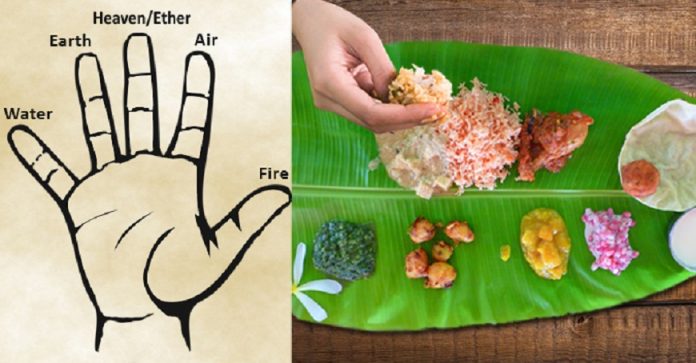I love my pizza, who does not? The sumptuous circle of a food, famed and flamed to have its origin in Naples, Italy, all appealing and appetising and slathered with toppings, indeed makes for a delicious square meal all over the globe. Take a bow, Neapolitans, for introducing this flatbread to us and giving us all a generous midriff.
I devour this caloric indulgence and relish it in the company of family and friends in the innumerable pizza outlets dotting the Mumbai metropolis. I always ask for a fork and knife to eat it, invariably inviting killer looks of admonishment and derision from my companions with a dismissive ‘how can you eat a pizza with a fork and knife’. Quite simply, I enjoy my cuts of pizzas with the toppings intact as I slide them into my mouth and savour it. Trying eating a pizza with your fingers without the toppings sliding off or the cheese not dripping over and generally having messy remnants around your mouth or colouring your clothes all red and yellow. Yes, eating it with your fingers indeed makes it that much more relishable and I would unabashedly admit that I eat it with my fingers when I order in.
I recall the hoary times of taking my ingenue of a doting mother for dinner outings at fancy restaurants. She always used to feel uncomfortable going to these places and used to resist these gourmand experiences though she herself was a great chef-at-home and knew her onions to know what good food is. Her singular discomfort was eating with her hands, as at home, in the snobbish etiquette driven surroundings where forks, knives and spoons were de rigueur. Quite simply, she was not used to eating with cutleries and did not enjoy it. Over time we could get her out of her discomfort and convinced her to be her natural self and eat the way she wants to. Her companionship was more important to us than the accompaniments of cutleries. After all, what’s food without a slurp? We all do it in the confines of our homes, don’t we?
Few like the summers due to the sun giving us the heat treatment, but the tropical Indian in me just loves it. Not for the heat, but for the succulent mangoes that the summers harvest. India produces a numerous variety of them and no one can resist its juices, never mind the fears of sweet and sugar in it. The best way to eat mangoes is the traditional Indian way – soften the fruit by pressing it all around and bite off the bottom edge of it and suck in the pulpy fruit through that orifice. Or better still, peel off the skin with your teeth, hold the bare fruit in your palm and bite off chunks of the fruit, squeeze it more as your go along and end it with a slurpy sucking of the seed to denude it of any remaining fruity pulp except for the hairy fibres. The finale to this ritual is of course the licking of your fingers and surreptitiously licking off the tiny stream of the juice that may run over the back of your forearm. These are the ways most of us would eat the mango at home and relish it. I recall stopping over at a village during one of my drives on a holiday many moons ago. I had bought some mangoes for some kids in the village and had a shared experience of devouring the fruit in this delectable way in the company of beaming kids. Nothing could be more natural and fun than that. It has stayed etched in my mind.

I often have fun challenging my non – South Indian friends to eat rasam sadam (a flowy condiment preparation mixed with rice) off a banana leaf (traditional way of serving food in many parts of India, especially in the lower half of our latitudinal divide). Sports that they are, they try to, but miserably fail in it. It’s hilarious to watch them struggle to get that morsel of rice and rasam to meet their lips, palate and saliva. The rice would end up being scattered all over and the rasam flowing off in rivulets to the edge of the banana leaf and a struggle to stop the rasam-fall crashing to their laps. A typical South Indian will have no problems scooping off this flowy meld with a quick back and forth sweep of the cupped palms and fingers fused together to take it to their oral destination. My family is a medley of cultures and linguistics, but none of these permanent guests into our culture have been able to master eating the south staple of a rasam sadam. No fork or knife can help you here. And eating rasam sadam with a spoon is just not it!
And is it any different with my non-vegetarian friends and fraternity gorging on their meat meals. Not at all. I have seen their fingers hold the tangdi kebabs with a love and feeling that even their beloved may not have seen and their 32s chew the meat off with a gusto and relish that will put a carnivore to shame. Or for that matter, the Nalli nihari where the piece de resistance is sucking at the bone to relish the marrow. And lest the sea food be left out, the clams and crabs are devoured with both hands and all fingers doing a waltz around to tango with the food. It had become fashionable decades ago and continuing even today to take the ‘firangs’ on the gourmand trails to eat our cuisines and delicacies in our deshi way. The sheer joy of of being unshackled from their western ways of cutlery etiquette and descending to nature’s way is a delight to watch indeed. Their ‘dil mange more’, is best reflected in their lores and trips to our land, if not on work, for the finger licking food that we offer.
Our Indian food, though different every 100 kms of our vast country, is a uniform medley of the dry, semi-dry, semi-gravy and the gravy. It just cannot be relished or relegated to being eaten except with our fingers, the nature-given fork and knife and spoon. Our palms and fingers are unmatched in their versatility for sure.

Are Indians (and many others of the ilk) gross? Not the least. But most unversed, limited in their world view and knowledge of cultures are guilty of this presumption. They forget that their own forefathers and ancestor were eating exactly the same way before the various evolutions and revolutions got them into cutleries, conveniences and etiquettes imposed by the snobs and the elites of the world and eventually finding their ways into other cultures and peoples. The mushrooming etiquette schools are but a hangover of our colonial past and the continuation of the ‘English’ and the “White” biased outlook towards the behavioural patterns of the ‘heritage’ or the ‘coloured’ or the ‘under-developed’ people and bringing in a new class system of the insider and the pariah (interestingly, this word has its etymology in Indian languages).
Most would be familiar with acupressure, acupuncture, reflexology etc. The basis principles behind all these curative methods or treatments are the inter-connectedness of the various parts of the body and how palpitating or prodding a particular point in one part can cure the problem in some other part of the body by setting right the imbalances or misbalances in our bodily system. While most Indians would swear by eating with their fingers and reflexively so given their upbringing, few would be aware of the logic or science behind it.
Many of our ancient texts, including Sushruta Samhita and Ayurveda, allude to the ten natural elements, viz., the Pancha Bhutas (five elements) – akash (space), vayu (air), Jal (water), agni (fire) and Prithvi (earth) and the five meta-physical elements – kaal (time), disha (direction), mann (mind), atma (soul) and tam (origin). Human beings (the non-living too) are subject to these natural elements and are governed by them. Any extant misbalance of these ten elements in our body will impact energy pathways and lead to health problems.

The sciences of these texts have been well researched and practised over eons to confirm that these ten elements are present in or represented by the ten fingers of our hands and the ten toes of our feet. At a practical level, given the presence of these elements in our fingers, eating with our fingers have a conducive impact on the enjoyment, digestion and absorption of food for our overall health and happiness.
Forget the forks, let the fingers do their job. It’s a freedom of a different kind, as important as the freedom of speech, the freedom of expression, the freedom of being. Just be!








